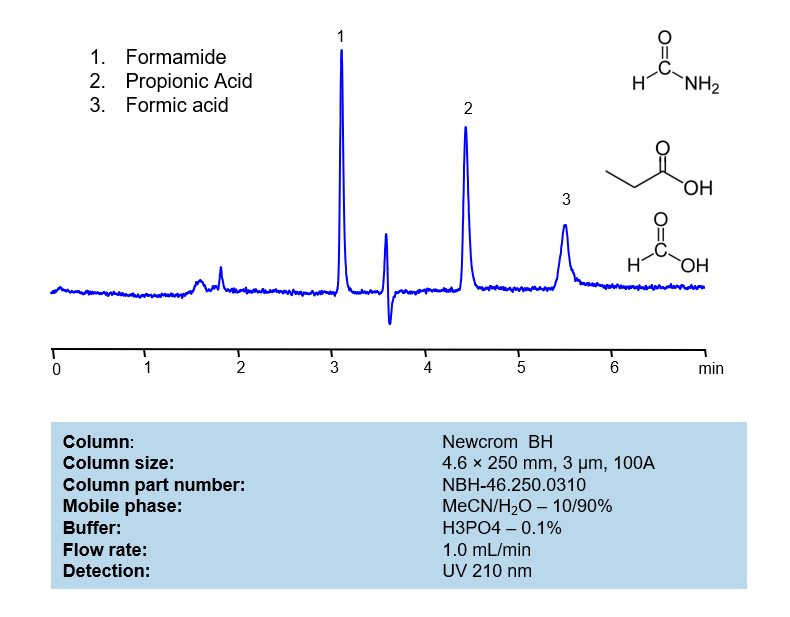HPLC Method for Formamide, Propionic acid, Formic acid on Newcrom BH by SIELC Technologies
High Performance Liquid Chromatography (HPLC) Method for Analysis of Formamide, Propionic acid, Formic acid.
Formamide is a popular industrial solvent with the chemical formula CH3NO. It has a wide variety of applications, including in the manufacturing of drugs, herbicides, pesticides, as a paper and fiber softener, and as a solvent for a plethora of ionic compounds. Historically, it was produced by treating formic acid and ammonia.
Propionic acid is a popular antifungal and antibacterial compound with C3H6O2. It is an oily liquid with an unpleasant smell. Primarily, the acid is used in food production as a preservative.
Formic Acid is the simplest carboxylic acid with the chemical formula CH2O2. It is naturally found in insects, weeds, fruits, and vegetables. It is used by insects as a method of self-defense. In agriculture, it is used as a preservative and antibacterial agent. In chromatography, it is used as a volatile pH modifier. It is used significantly in the tanning of leather, dyeing and finishing of textiles, and production of rubber.
Formamide, Propionic acid, Formic acid can be retained, separated, and analyzed on a mixed-mode Newcrom BH column with a mobile phase consisting of water, Acetonitrile (MeCN), and Phosphoric acid (H3PO4). This analytical method can be UV detected at 210 nm with high resolution and peak symmetry.
| Column | Newcrom BH, 4.6 x 250 mm, 3 µm, 100 A, dual ended |
| Mobile Phase | MeCN/H2O – 10/90% |
| Buffer | H3PO4 – 0.1% |
| Flow Rate | 10 ml/min |
| Detection | UV 210 nm |
| Class of Compounds | Acid, Hydrophilic |
| Analyzing Compounds | Formamide, Propionic acid, Formic acid |
Application Column
Newcrom BH
Column Diameter: 4.6 mm
Column Length: 250 mm
Particle Size: 3 µm
Pore Size: 100 A
Column options: dual ended
Formic acid
Propionic acid






